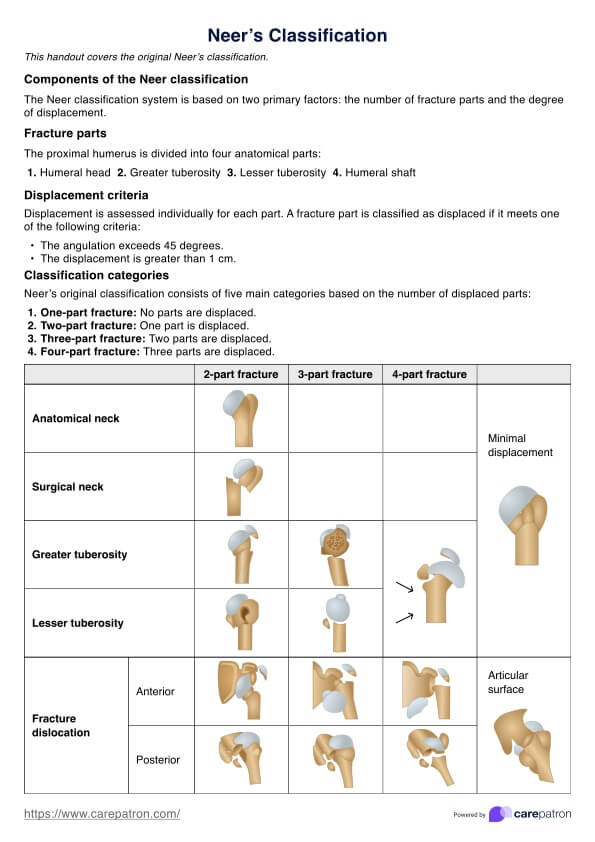Neer's classification categorizes proximal humeral fractures based on the number and displacement of fracture parts, including one-part, two-part, three-part, and four-part fractures.

Neer's Classification
Discover Neer's Classification for proximal humerus and distal clavicle fractures, including types, symptoms, and treatments. A comprehensive guide for healthcare professionals and students.
Neer's Classification Template
Commonly asked questions
The classifications include one-part (non-displaced), two-part, three-part, and four-part fractures. The modified Neer classification for distal clavicle fractures includes Type I (lateral to CC ligaments), Type IIa (medial to CC ligaments with displacement), Type IIb (between CC ligaments with torn conoid ligaments), Type III (intra-articular), Type IV (Salter-Harris type I), and Type V (comminuted with medial displacement).
The four parts are the humeral head, greater tuberosity, lesser tuberosity, and surgical neck.
EHR and practice management software
Get started for free
*No credit card required
Free
$0/usd
Unlimited clients
Telehealth
1GB of storage
Client portal text
Automated billing and online payments











